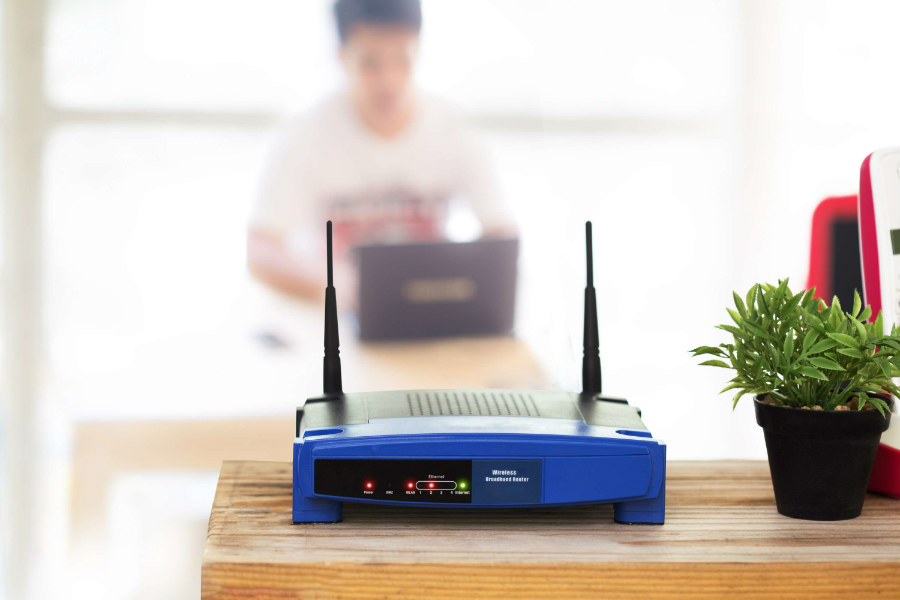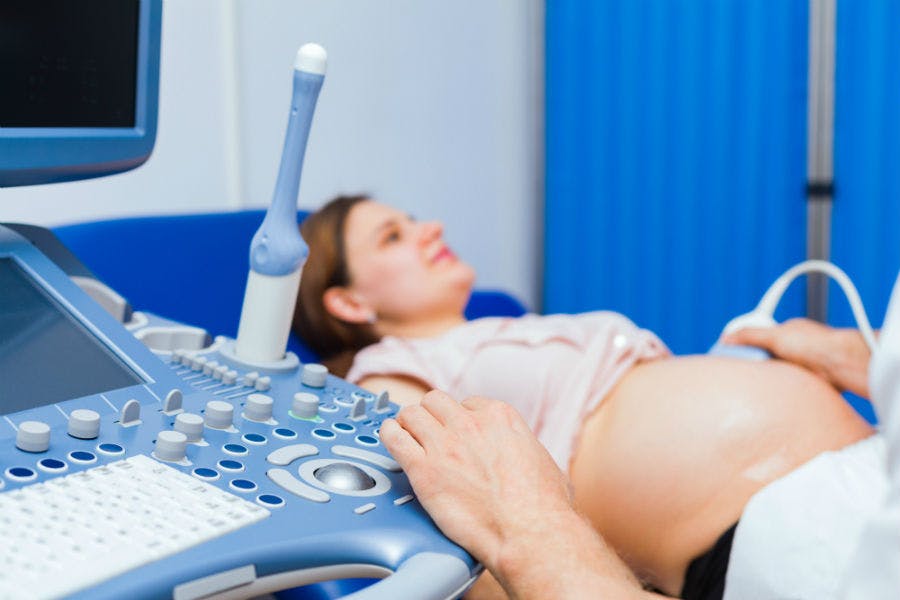Most Australians know that it was our university researchers who were behind cool medical inventions like the bionic ear, and more recently our innovators at the CSIRO are getting the credit they deserve for their part in developing the WiFi technology that gets used every day by billions around the world.

Australian innovation such as WiFi has changed the world of tech for the better.
But the reality is that while Australia puts out 3.9 per cent of the world's research, we still only represent 0.3 percent of the world's population. So it’s no wonder that while a lot of that research gets turned into products that see daily use, there are a few innovations that have changed the world of technology that don’t enjoy such widespread recognition.
Clapperboards
Australia may lay claim to the world’s first feature film - The Story of the Kelly Gang (1906) - but we also hold the title for the invention of a piece of technology that still sees widespread use in film today - the humble clapperboard.
The clapstick was originally just two sticks hinged together. It was invented by Francis William Thring sometime in the early 1900s and it solved a pressing issue.
Before the invention of digital movies, the visual and audio tracks used by filmmakers of the time were recorded on separate media using separate equipment. The action was recorded on light-sensitive film, while the audio was recorded by on magnetic tape. The issue was that the studio editor had no easy way to synchronise the sound recording with the actions recorded on film.
The clapperboard combines a chalkboard slate with a clapstick. The slate displays the name of the production, the scene and "take" about to be performed, and similar information. The clapsticks traditionally have diagonally interleaved lines of black and white to ensure a clear visual of the clap in most lighting conditions. An assistant holds the clapperboard so the slate is in view of the cameras, speaks out information for the benefit of the audio recording, then opens the clapstick and claps it shut.

This example of Australian innovation is still used in Hollywood to this day.
The shutting of the clapstick is easily identified on the visual track, and the sharp "clap" noise is easily identified on the separate audio track. And since each take is identified on both the visual and audio tracks, segments of film are easily matched with segments of audio.
The result? Audio and visual tracks can later be precisely synchronised by matching the sound and movement and be played in sync.
Today we have digital cinematography that combines both visual and audio tracks in a single file. Yet studios still make use of clapperboards in an updated format that displays time codes and other digital information. But it all began here in Australia!
Simple GPS
Australia is a big place, and to get around efficiently takes some planning. Especially when you’re not familiar with the area. This is when GPS technologies like Google Maps can come in handy.
But before we had Google Maps, these solutions were clunky at best. They were slow, hard to use, and were frequently out of date.

Thanks to Australian innovation, GPS maps are easier to use.
Enter a little Australian innovation. In 2003, Noel Gordon and Stephen Ma together with Danish brothers Jens and Lars Rasmussen founded Where 2 Technologies in Sydney. This company began work on a mapping project for a prototype application called Expedition. At the time this project only ran on the desktop but still attracted the attention of Google, which acquired the Where 2 in 2004.
Since then, Google expanded the use of the application and integrated it with a range of other technologies.
Today, Google Maps offers many features:
- A top-down view of most of the world
- Satellite and aerial views
- Streetview
- Live traffic updates
- Walking and biking directions
- Interactive interior views
Together, these useful features made Google Maps wildly popular. In 2013, it was estimated to one of the most popular smartphone apps in the world - with over 54% of global smartphone owners saying that they have used it at least once.
And it all started here in Australia.
Ultrabattery
Another excellent example of combining technologies to produce new and improved solutions is the CSIROs UltraBattery.
The UltraBattery is a combination of a conventional lead-acid battery and a supercapacitor. Lead acid batteries have been around in various forms for over 150 years - you probably have one sitting in your car right now. While they sound fancy, supercapacitors are another piece of everyday technology - they involved in high-energy activities like powering camera flashes.
The CSIRO was tasked with finding a way to store and deliver variable energy loads efficiently, while at the same time keeping the technology cost effective. By combining these two technologies, they say they have done just that.
In comparison to other batteries, the UltraBattery has faster discharge/charge rates, costs less, and has a useful life cycle that is up to three times longer than a regular lead-acid battery. And it can be made using existing manufacturing facilities.
The Ultrabattery is ideal for uses where both the recharging cycle and discharge cycle are unpredictable and demanding. This includes uses in electric and hybrid vehicles, as well as helping to store electricity generated by renewable energy sources. In effect, the batteries “smooth out” the rate of availability, making sure that electricity is provided when needed, and stored when it’s not.
This is important for dealing with renewable energy sources such as the sun and wind. While the energy they offer is plentiful and offers a low emission, sustainable alternative, we only get electricity from these sources when the sun shines or the wind blows. By using the UltraBattery, intermittent electricity from these renewable sources can be fed smoothly into the grid
Not only does this improve power quality and stability and allowing a greater percentage of our energy supply to be generated by a renewable source, it also can store energy for use during peak demand times.
The UltraBattery also has the potential to improve energy security by reducing reliance on diesel generators.
To date, this new type of battery is being made commercially available through energy storage solution company Ecoult. It is also being used by Honda in its new Odyssey hybrid model. As demand for better energy storage and generation continues, the Ultrabattery may soon see widespread use in vehicles and powers systems across the world.
Ultrasound scanner
Medical ultrasound scanners are a type of diagnostic imaging technique that uses ultrasound to “see” internal body structures we otherwise could not access without surgery. Anyone who has had kids in recent times knows about this piece of technology, as obstetric ultrasound is quite common.
But what you might not know is that the discovery that ultrasound frequencies could reflect off soft tissue was made here in Australia by the CSIRO. The Ultrasonics Research Section of the Commonwealth Acoustic Laboratories Branch found a way to measure and display ultrasound echoes bouncing off soft tissue in the body, turning the soundwaves into TV images.

The humble ultrasound scanner is the result of Australian innovation.
Ultrasound waves are too high-pitched for people to hear them but are ideal for penetrating soft tissue. Today, ultrasonic images are made by sending pulses of ultrasound into the body using a probe. The sound waves echo off the tissue, with different tissues densities reflecting different frequencies of sound. These echoes are recorded and displayed as an image to the operator.
This discovery was commercialised in 1976 by Australian company Ausonics. This technology completely changed the medical imaging industry - especially in the field of prenatal care, as it gave expecting parents a window to the foetus without x-ray exposure.
Compared with other methods of medical imaging, ultrasound has several advantages. It is low-cost, portable and shows what’s happening inside a patient in real-time. It also does not use ionizing radiation, which can be potentially damaging to some patients.
Over four decades later, and these devices are still in use today. This is a prime example of how a bit of Australian innovation can change technology forever.
Medical nano-patches
Does anybody really enjoy going to the doctors? Chances are that unless your GP is a close friend, there is a sense of apprehension. Especially if needles are involved.
This ingenious innovation could see our doctors putting away their pointy stickers in favour of a much less painful procedure.

Blood tests with syringes could soon be a thing of the past.
Researchers at the University of Queensland have developed a patch lined with microscopic needles that can quickly and painlessly detect disease-carrying proteins in the blood.
The patches are small chips made from gold-coated silicon wafers that are lined with countless microneedle arrays. The needles in these arrays are so small that patients can’t feel them piercing the skin. Once applied, these are then removed and exposed to special detection agents that react to disease-related proteins. This process is so quick that doctors may be able to detect the presence of disease-carrying proteins inside of an hour.
This is great news across the board. In a suburban setting, you could just go to the GP on your lunch break and get the results before you go back to work, rather than perform a blood sample, then come back in a week for the results. In places where medical diagnostic tools are harder to come by, the patches could help give faster results that deliver faster treatments that potentially save lives.
The Australian National Health and Medical Research Council has provided a grant for further research on the development of commercial prototypes. The idea is to make these strips out of polymer or plastic to help keep manufacturing costs down.
This breakthrough in nanotechnology could see a massive reduction in the need for needle-based blood samples, and a significant drop in waiting time for lab analysis.
While still a relatively new invention, these nano-patches have the potential to change the way we diagnose disease in the future.
These medical nano-patches could make a huge difference to those of us living in parts of the country where we don't always have easy access to facilities that enable safe and effective blood sample analysis and vaccination. At the same time, it will also be yes, syringe-free blood tests would be a welcome change for many as well.
Australian Innovation isn’t slowing down
Despite all of our previous achievements innovation, Australia refuses to rest on its laurels as we continues to produce a great deal more than our fair share of of research across a plethora of fields. As far as developing innovations that reshape the world of tech goes, Australia is up there with the best of them and we’re showing no signs of slowing down.